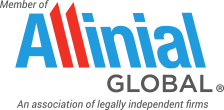A couple of months ago, we wrote a blog describing “WHY BUDGETING IS CONSIDERED KEY TO BUSINESS FINANCIAL SUCCESS?” and one of the mentioned benefits of budgeting was planning and predicting cash flows. We assume that, due to the unpredictable events caused by COVID-19, there would be a major change in the budgeted figures and improving cash flow is important to help owners make decisions that will influence the future of their company.
As a major portion of cash revolves around accounts receivable and payable, let us examine some methods to achieve budgeted cash flow through its proper management.
- Improve Receivables Credit Policy: Review your receivable credit policy i.e. your credit terms. It should be less than the credit period given to you by your suppliers. In order to improve your receivables credit period, you can encourage customers to pay faster with an early payment discount scheme.
On the other hand, you can check with your supplier if payment terms can be increased on the basis of your long-term relationship. If not all, some of them may agree and extend your credit period from (hypothetically) 30 days to 45 days. - Advance Payment: If you are providing a service or goods that involve substantial cash or effort before delivery of said service or goods, ask your customer to pay a portion of that as an advance. An advance can range between 30%-50%, depending on the agreement with your customer and the type of services or goods to be provided.
- Transaction cycle between receivable and payable should not be too long, or else you will end up investing in additional human resources or will end up paying interest on delay in payments to your suppliers.
- Invoice financing: This option is also known as invoice factoring, invoice discounting or, in simple terms, selling your sales invoice to finance companies or banks. For example, if you have credit terms of 30 days with a customer, you can get the amount from a finance company on the day the invoice was issued, instead of waiting for 30 days.
- Set up a policy for long outstanding receivables: Set up a policy indicating the maximum period it should take to clear a customer’s account. If any outstanding receivables exceed the maximum period, act immediately and suspend any further business with that client until their account is settled.
- On-time Accounting: Record all transactions immediately and keep track of aging summary on a regular basis.
- Use Automated feature of accounting software: Tracking receivables and payables manually would be time consuming and more cumbersome if even a single document is missed. Automating the process will help you with quick compilation of information and send regular reminder mail to customers for payment without interrupting your routine work.
Other than the methods mentioned above, you can also improve cash flow by converting fixed costs into variable costs, cutting or delaying expenses, looking to sell or lease idle assets, checking for deferment of loan instalments, lowering instalment amounts etc.
It is very important that you consider your business model before selecting from the above methods to improve cash flow. Contact us for more information







